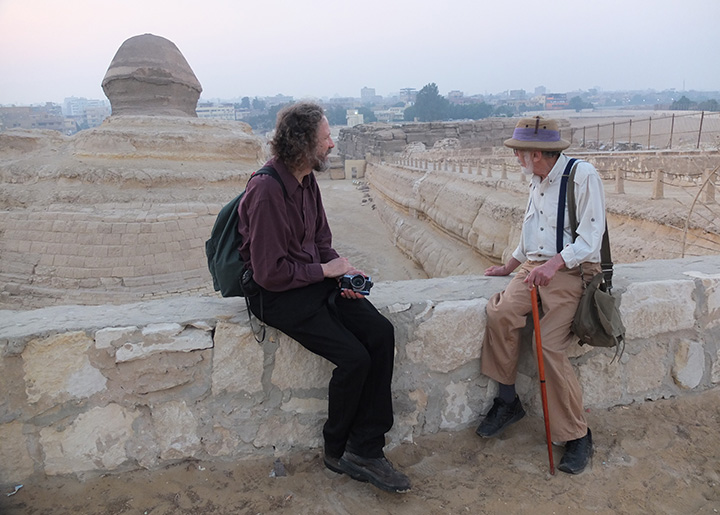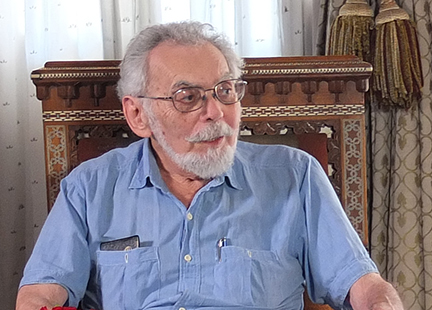
John Anthony West (1932 – 2018):
On Dying and Death
By Robert M. Schoch
(Posted 9 February 2018)
John Anthony West died on 6 February 2018. I cried when I learned the news. Yes, I cried, and I still do when I realize he is gone from this world. Not one for unnecessary sentimentality (he had a soft and kind soul housed in what could sometimes come across as a bitingly sarcastic façade – he considered himself a satirist, at least in part), I doubt West would want me to state it any other way (this pertains to me and my friendship with him; he might prefer different words from others). Of course, if one knows anything about West and his work, one realizes that here we are referring to merely physical death, not total annihilation of his consciousness, being, spirit, soul, or whatever term one may want to use – West fully believed that there was something more, much more, than this physicalist materialistic life on planet Earth.
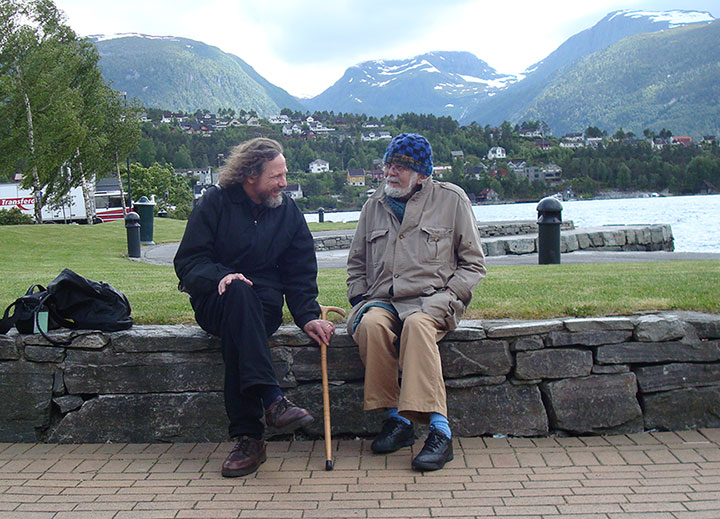
JAW1 was my friend and colleague for nearly three full decades, a period of time that now seems all too short and went by much too quickly. Despite being a generation apart (JAW was born a few months short of twenty-five years before I was), we were very close – not only as professional colleagues and collaborators in research, but as personal friends. I cannot express how deeply I miss him even now, and I do not believe it will become any easier in the future, but I do want to continue the research, as he always encouraged me to do, and thus perpetuate his memory and legacy. There were books and other projects we were collaborating on together – I do not know what will come of these; much will depend on the state of affairs after his notes and manuscripts2 are sorted through by his family.
Once I can pull myself together (I am finding that it is difficult dealing with such a loss), I will perhaps post some biographical notes, recollections, reflections, anecdotes, and so forth, regarding JAW. The thought of writing a biography of him has already crossed my mind; JAW’s work and influence certainly deserve to be recorded and disseminated for posterity. For those who would like to share anecdotes, memories, photos, and information regarding JAW, please feel free to write to me at "info at robertschoch dot com".
For the time being, I am posting here some photos of JAW (and I), recollecting the great times we shared, along with a few notes regarding his death and some thoughts, indeed his thoughts, on dying and death.
It was in late 2016–early 2017 when JAW suddenly and unexpectedly felt ill and was ultimately diagnosed with Stage 4 cancer that, originating in his left lung, had spread throughout his body, including into his brain. During the previous summer JAW and I had been in Egypt together once again, this time along with my wife Katie and JAW’s adult son Zeke, pursuing further research on our mutual interests, including the Great Sphinx. In December 2016, JAW led one of his famous tours to Egypt, but he began to show abnormal signs of fatigue and even illness during the trip. Upon returning to the United States, he consulted a physician and that is when the cancer was discovered. JAW was scheduled to lead another two-week tour to Egypt in February–March 2017, but he found himself in the hospital instead (although still fully conscious and alert at that point). Out of friendship and at the request of the family, I rearranged my schedule and on a volunteer basis I led the tour in place of JAW. But the tour was still JAW’s. I did my best to represent his points of view and analyses at the various sites we visited, from the Giza Plateau in Cairo to Abu Simbel in the far south. Additionally, I included my own observations and commentary as well.
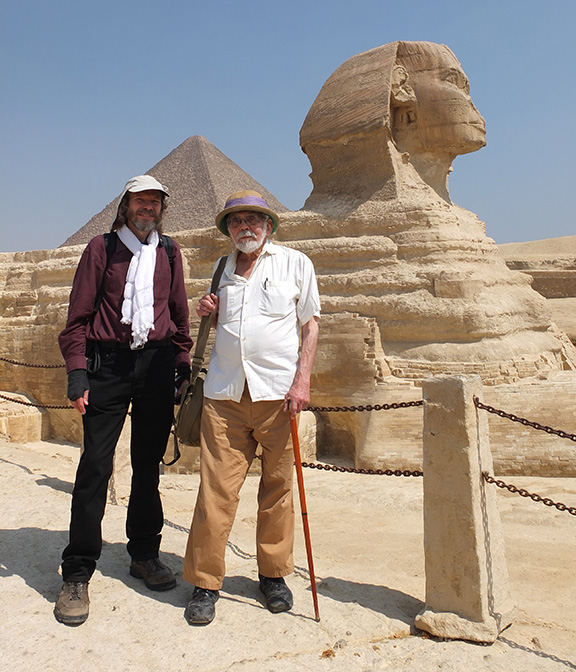
While leading the final JAW Egypt tour, given the state that my close friend was in at the time (after all, that is why I was leading the tour in his stead), I could not help but contemplate issues of dying and death. It is often remarked that the ancient Egyptians seemed to have had an obsession with death – and this is reinforced by the fact that much of what we know about them comes from tombs or supposed tombs. (I am not convinced that all of the various pyramids, mastabas, and supposed underground “tombs”, were necessarily tombs. In some cases, earlier structures used for other purposes may have later been converted into tombs.) Much of ancient Egyptian literature, such as the Pyramid Texts and the so-called Book of the Dead, have a funerary context. And of course the ancient Egyptians were famous for their elaborate mummification procedures. This pervasive theme of death running through so many of the monuments we visited, combined with JAW’s struggle to avoid immediate death, perhaps understandably kept bringing my thoughts back to this great event, so terrifying for many souls, that all mortals must ultimately face. If one is to ponder such issues, what better place than among the remains that have survived from ancient Egypt? I found it cathartic, and I am convinced that the ancient Egyptians possessed profound insights into such matters that we can benefit from today.
As JAW, based on his analyses of the work of R. A. Schwaller de Lubicz (1887–1961)3, pointed out, the core of the ancient Egyptian belief system, of ancient Egyptian religion, focused on the concept of spirit or consciousness manifesting in the material world, and the rising or transformation of the material back to the spiritual, back to the realm of the divine, back to consciousness. To quote JAW directly regarding this topic:
"The manner in which the spiritual generates and interacts with the physical is the basis of the entire Egyptian doctrine. The study of physical realities produces physical science; the study of spiritual realities produces sacred science."4
The Egyptians put sacred science to practice. According to Egyptian doctrine, "consciousness is the primordial property, that which precedes all else: the All or Absolute is conscious. It is consciousness that ultimately calls the universe into existence, and it is consciousness that, ultimately, sustains it."5
Furthermore, we as conscious entities do not necessarily cease to exist upon physical death. There is the potential (a potential that can only be fully realized by sincere spiritual work and discipline) for our consciousness to continue, to go on, to live – either for some limited period of time, or ultimately perhaps to become immortal. For the ancient Egyptians, physical material death in this life was not death in any final sense, but a transition, a passage, a transformation. To quote JAW once again:
"Now when death is regarded not (as with us) as an ultimate dissolution, but rather as a transitional (and crucial) stage of a journey, then the apparent Egyptian preoccupation with death becomes exactly the opposite of what it seems to be. It is, in fact, a preoccupation with life in the deepest possible sense."6
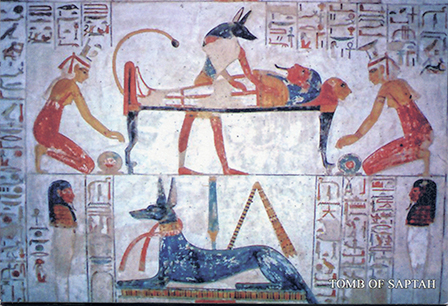
Given this emphasis on consciousness, on the spiritual, as fundamental and primordial, what do we make of the elaborate mummification procedures, funerary rites, and supposed tombs stockpiled with physical goods that are so iconic of ancient Egypt? Mummification and its attendant rituals appears on one level to be grossly materialistic, the ancient version of modern cryonic preservation of a human body with the hope that at some future date, with the advancement of medicine and technology, the deceased might be resuscitated and restored to health – that is, be brought back to life in a physical sense. But such an interpretation of Egyptian mummification and entombment is to force our values and beliefs on a very different culture. Rather, according to JAW (again, based on the earlier work of Schwaller), mummification relates to the two possible spiritual paths that, according to the ancient Egyptian doctrine, were available to an individual: reincarnation and resurrection.
"Like all other initiatic teaching, Egypt held that man's purpose on earth was the return to the source. There were recognized in Egypt two roads to this same goal. The one was the way of Osiris, who represented the cyclic nature of universal process; this was the way of successive reincarnations. The second road was the way of Horus, the direct path to resurrection that the individual might achieve within a single lifetime."7
In this context, the ultimate goal is resurrection, whether after many earthly existences (incarnations and reincarnations) or only a few. Resurrection as viewed by the ancient Egyptians is not the concept that is sometimes envisioned in a Christian context of persons rising out of their graves clothed with physical or material-like bodies; rather resurrection is the reunification with the divine, with the ultimate source, with the God of gods who created the cosmos and all within it.
Reincarnation is a path (in some cases a seemingly endless path, or even a diversion) toward the ultimate goal of resurrection. Reincarnation may, in the short-term, be of benefit for the development of the soul, but ultimately the goal is to become a "fully realized" or "perfected" individual who can resurrect and reunite with the divine source. And this is where mummification played a key role in ancient Egypt.
From an ancient Egyptian perspective, mummification was a way to keep the individual from reincarnating. As long as the physical body remained intact, then the individual – the soul – continued its existence in the Duat (the underworld, the realm of the dead ruled by Osiris). In the Duat the soul could continue its spiritual development, ultimately (if all went well) becoming a "perfected" or "realized" individual without having to undergo additional physical reincarnations. And what happens to the perfected individual according to ancient Egyptian doctrine? JAW answered with the following words:
"The realized or perfected individual 'becomes a star and joins the company of Re, and sails with him across the sky in his boat of millions of years.’ "8
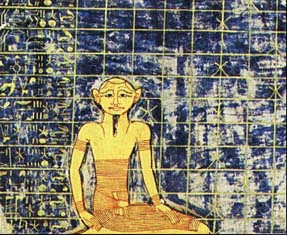
Re (=Ra) is the primordial cosmic creator or creative source, visibly manifested as the Sun. As JAW writes, Re "is the solar principle responsible for all creation"9. Thus, Re is the source and origin of all creation, all that is and was and will be, the divine spark, the consciousness (the word) behind and underlying all manifestations, material and immaterial. To join the company of Re is to return to the source, to the divine origin of all things, to become a god. And how does a human do so? By becoming a star or a sun (for our Sun is simply a star from an astrophysical perspective). We must become the Sun! This is the ultimate destiny that the spirit or soul or personality or consciousness strives for.
JAW, writing in 1985, remarked that the ancient Egyptian concept of becoming a star, or becoming the Sun, is "beautifully poetic"10, without fully considering the possibility that such language is perhaps to be taken literally. However, what if our Sun and the stars are indeed conscious? What if, when we die our consciousness has the potential to literally become a star, or unite with the already existing consciousness of our Sun or perhaps some other star? This is something that Katie (my wife, she knew JAW well) has been developing11, and JAW was certainly intrigued by her ideas. Stars are comprised largely of hydrogen, and it has been demonstrated that hydrogen can encode information. Are we on the brink of beginning to understand, in modern terms, the core of the sacred science? Is the essence of ourselves carried (perhaps via hydrogen or its components) to the heavens? The ancient Egyptians certainly believed we can become stars, and now JAW is discovering the truth firsthand. He is off on another great adventure. Wherever he is, whatever he may be doing at this moment, I wish my dear friend well on his journey.
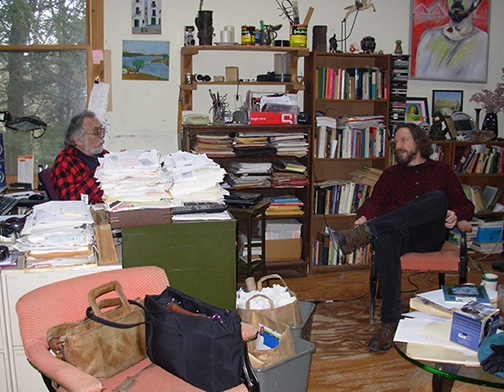
Endnotes:
1. On a personal note, the names we habitually used for each other, from the first day we met, were “West” and “Schoch”. On occasion, when in the presence of other people, I might refer to him as, or call him, “John”, but I do not remember him ever using any name other than “Schoch” for me. For the sake of convenience, however, I will refer to him as “JAW” for the duration of this article. Some people actually verbalize the word “Jaw” as a nickname for West.
2. In this day and age, many of his notes and manuscripts may only exist electronically. I do hope they can be located and accessed. He was, by his own admission, notorious for being both “inefficient” and “unorganized” – common signs of genius, I have been told. There is no doubt in my mind that he was a genius. I have known many intelligent and highly educated people. JAW was one of the best informed and most intelligent individuals I have ever met.
3. See: John Anthony West, Serpent in the Sky: The High Wisdom of Ancient Egypt. New York: Harper and Row, 1979 (Updated edition: Wheaton, Illinois: Quest Books, 1993). See also: John Anthony West, The Traveler's Key to Ancient Egypt: A Guide to the Sacred Places of Ancient Egypt. New York: Alfred A. Knopf, 1985 (Updated edition: Wheaton, Illinois: Quest Books, 1995).
4. The Traveler’s Key to Ancient Egypt, 1995, p. 59.
5. Traveler’s Key, p. 60.
6. Serpent in the Sky, 1993, p. 83.
7. Serpent, p. 83.
8. Traveler’s Key, p. 62.
9. Traveler’s Key, p. 66.
10. Traveler’s Key, p. 62 (this was originally written in 1985).
11. For more on Katie’s ideas along these lines, see
her page on this website and (for greater detail)
Forgotten Civilization,
the section titled, From Stars We Come and Thence We Return
.
